Current Research
1) Comparative quantitative genetics across Drosophila
With Tony Frankino, I am attempting to determine the genetic architecture (i.e., the number, genomic positions, effects, interactions, and pleiotropy) of interespecific wing shape variation. I am using an integrative approach combining morphometrics, phenotype-assisted introgression, and new genotyping techniques developed in the Stern lab. I am focusing on one Drosophila species pair and will eventually expand to compare three well studied species pairs. These cross-pair comparisons will allow us to look for shared patterns of molecular and morphological evolution. Thus far, we have had success with phenotype-assisted introgression and will begin genotyping shortly. This research is supported by my NSF Bioinformatics postdoctoral fellowship.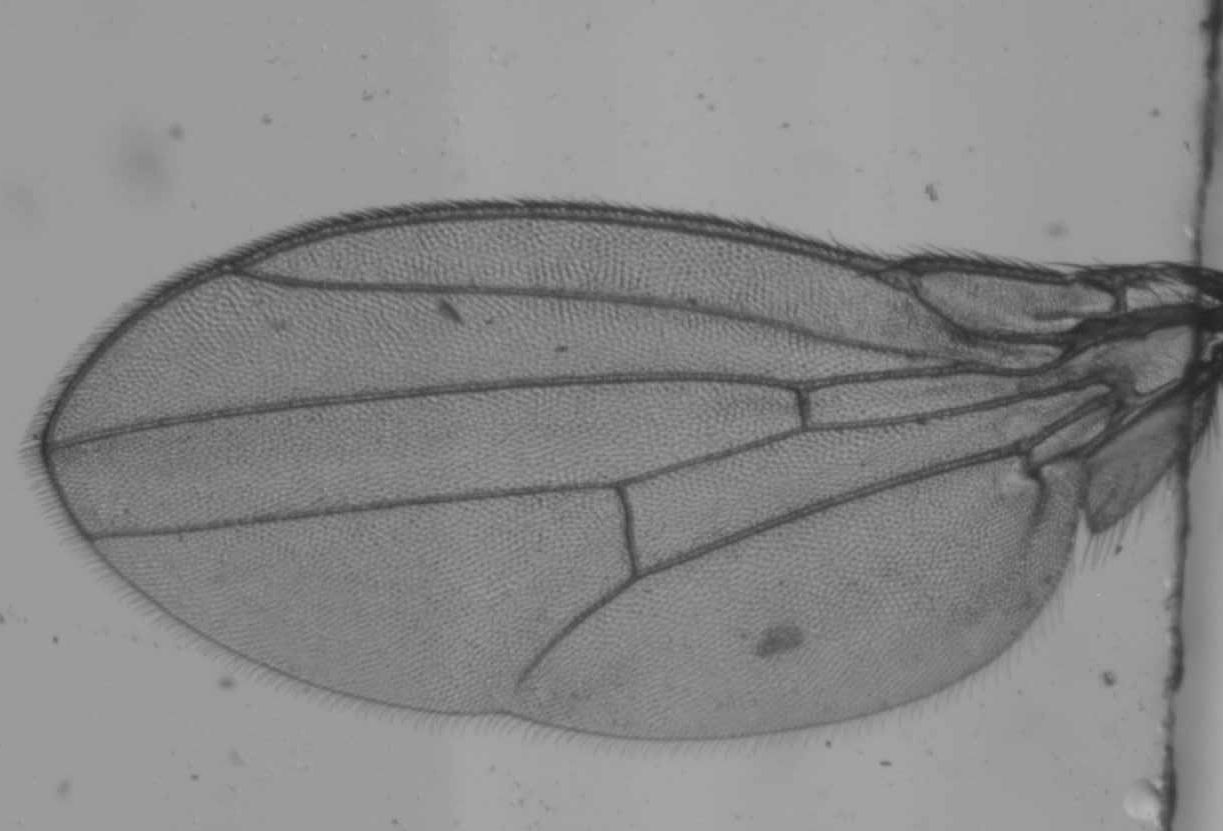
wing of Drosophila santomea
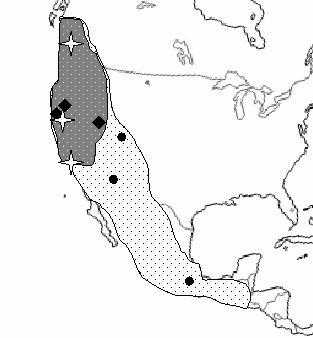
range of D. pseudoobscura and D. persimilis
2) Reinforcement in a Drosophila species pair
I am interested in the formation and maintenance of reinforcement, the pattern of enhanced species discrimination in areas of sympatry compared to allopatry. I am conducting companion experiments using Drosophila pseudoobscura and D. persimilis. The first experiment examined the persistance of reinforcement in the absence of selection against hybridization. We found that generally significant reinforcement only occurred in our recently collected populations and not in populations maintained for many generations in experimental allopatry. The second experiment is examining the mechanisms and repeatability of the evolution of reinforcement using experimental evolution. We are determining how changes in the strength and mode of selection influence the evolution of enhanced species discrimination and we are tracking multiple traits related to mating over several generations to determine how this discrimination evolves.3) Fitness costs of hybridization
Because natural selection against hybridization is the driving factor for the evolution of prezygotic isolating mechanisms associated with reinforcement, I am studying the cost of hybridizaiton in D. pseudoobscura and D. persimilis. I am looking at a suite of fitness traits (e.g. offspring viability, frequency of developmental abnormality, etc) across multiple lifestages and generations. I have found that the fitness effects of hybridization extend beyond F1 hybrid generation. In addition, when viewed over the full range of stages and generations, hybridization is very costly and extends beyond the well-known male hybrid sterility.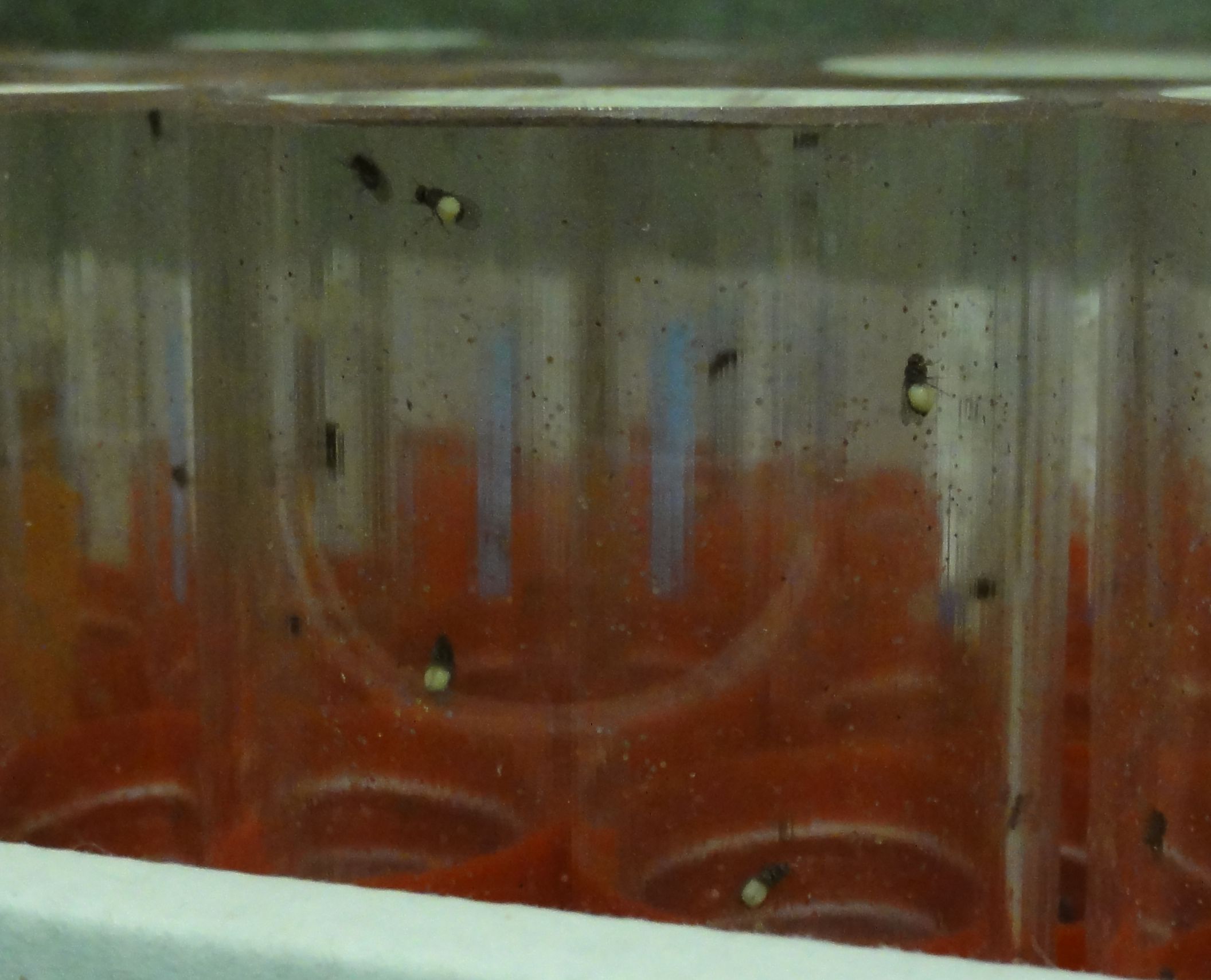
Drosophila in egg laying chambers
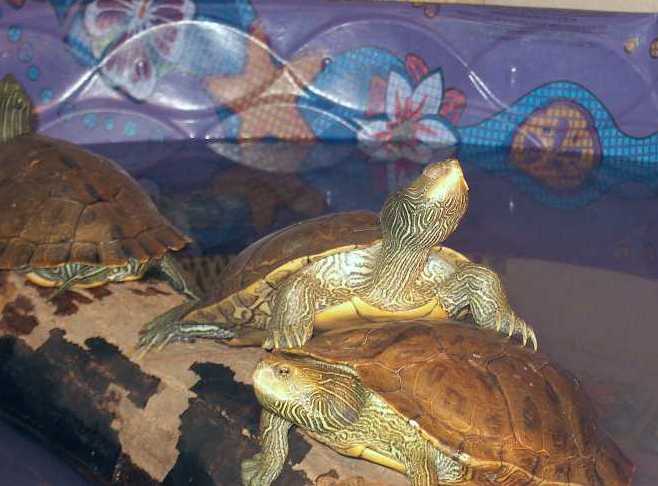
Graptemys geographica (Common map turtle females)
4) Post-orbital color pattern variation and the evolution of a radiation of turtles (Grapteyms)
For my dissertation research, I examined the role of post-orbital color patterns in selection, speciation,and mate choice in the map turtle genus. I utilized a variety of techniques including phylogenetic and population genetic analyses, morphometrics, mate choice experiments, and multivariate heritability. While there are interesting patterns of morphological variation, post-orbital coloration does not appear to be a driving force in speciation or mate selection. I am also collaborating with Steve Freedberg to examine patterns of hybridization in a unique population of Grapteyms.5)Plastron shape in slider turtles Trachemys scripta
With my collaborators, I examined plastron shape for 162 clutches of slider turtles and assesed differences in shape between populations, nests, and individuals. I calculated heritability and examined the direction of shape change. I found that shell shape is heritable and the direction of shape change is different across populations. Subsequent research has examined the effects of body size and plastron shape during overland migration and in swimming performance. I found that increasing body size improves recapture success in overland migration and that shell shape can influence swimming performance. I am currently working with Suzanne McGaugh and Tim Mitchell to examine the heritability of hatchling righting time.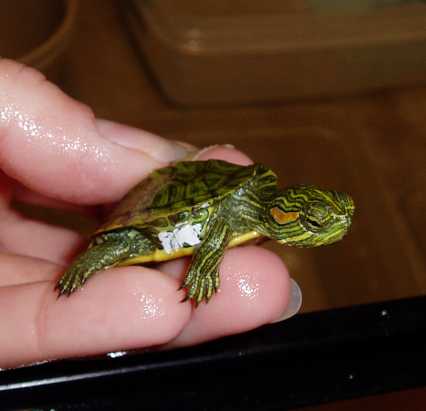
Trachemys scripta (red-eared slider turtle)
Past Research Projects
6) Cranial morphology in Plethodon salamanders.
With Dean Adams, I examining the effect of interspecific interactions between Plethodon cinereus and Plethodon shenandoah on salamander head morphology. We looked at populations on 3 mountains in the Applachains and compared populations across elevations. This work is in press. Additional research examined how cranial morphology of Plethodon cinereus differed between upland and lowland habitats. Additionally, the research examined the relationship of habitat and prey types and found a correlation between changes in head morphology and changes in diet.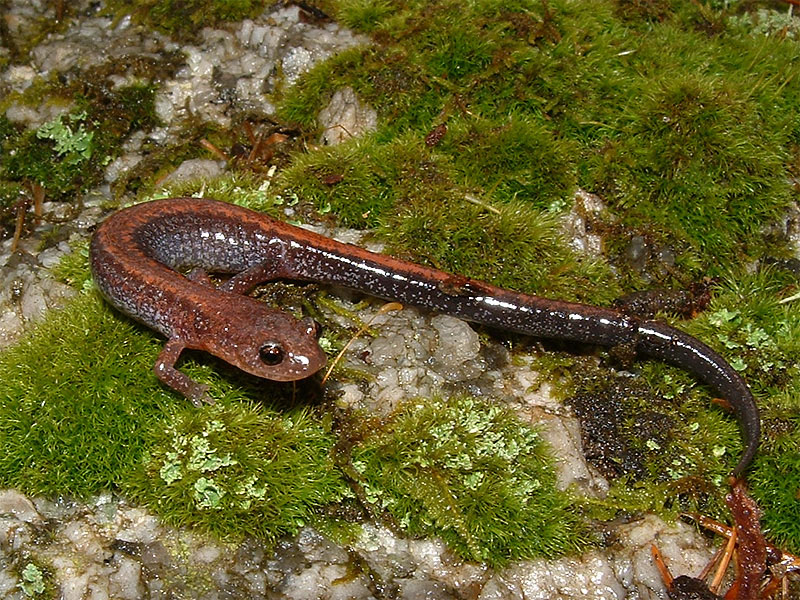
Plethodon cinereus (red-backed salamander)
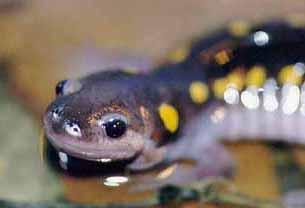
Ambystoma maculatum (spotted salamander)